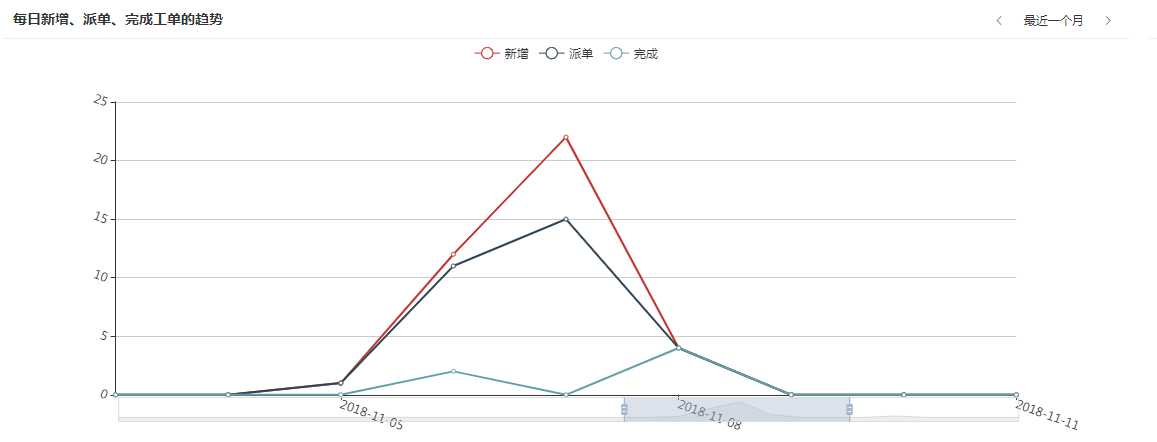标签:表数 lse func chart har patch img otto tool
vue页面中使用折线图,并且有时间段筛选。因此就需要用到横坐标的拖拽功能。
界面效果如下:

现在来看这个效果的实现代码:
drawLine() { let that = this, lineDate = [], dispatchCount = [], finishCount = [], newCount = []; let param = { // 参数 }; axios .post(url, param) .then(function(response) { let rs = response.data.data; if (rs != undefined && rs != [] && rs != null) { for (let i = 0; i < rs.dispatch.length; i++) { lineDate.push(rs.dispatch[i].day); dispatchCount.push(rs.dispatch[i].count); } for (let i = 0; i < rs.finish.length; i++) { finishCount.push(rs.finish[i].count); } for (let i = 0; i < rs.new.length; i++) { newCount.push(rs.new[i].count); } } let lineChart = that.$echarts.init( document.getElementById("lineChart") ); lineChart.setOption({ tooltip: { trigger: "axis" }, legend: { data: ["新增", "派单", "完成"] }, grid: { left: "10%", //因旋转导致名字太长的类目造成遮蔽,可以配合这两个属性 bottom: "10%" // 分别表示:距离左边距和底部的距离,具体数值按实际情况调整 }, xAxis: { type: "category", boundaryGap: false, data: lineDate, axisLabel: { interval: 2, //0:全部显示,1:间隔为1显示对应类目,2:依次类推,(简单试一下就明白了,这样说是不是有点抽象) rotate: -20 //倾斜显示,-:顺时针旋转,+或不写:逆时针旋转 } }, yAxis: { type: "value", axisLabel: { // formatter: function(v) { // return parseInt(v); // 让y坐标数组为整数 // }, rotate: -20 }, }, // x轴拖动 dataZoom: [ { type: "slider", realtime: true, //拖动滚动条时是否动态的更新图表数据 height: 25, //滚动条高度 start: 40, //滚动条开始位置(共100等份) end: 65 //结束位置(共100等份) } ], series: [ { name: "新增", type: "line", data: newCount }, { name: "派单", type: "line", data: dispatchCount }, { name: "完成", type: "line", data: finishCount } ] }); }); },
标签:表数 lse func chart har patch img otto tool
原文地址:https://www.cnblogs.com/ss977/p/9969758.html